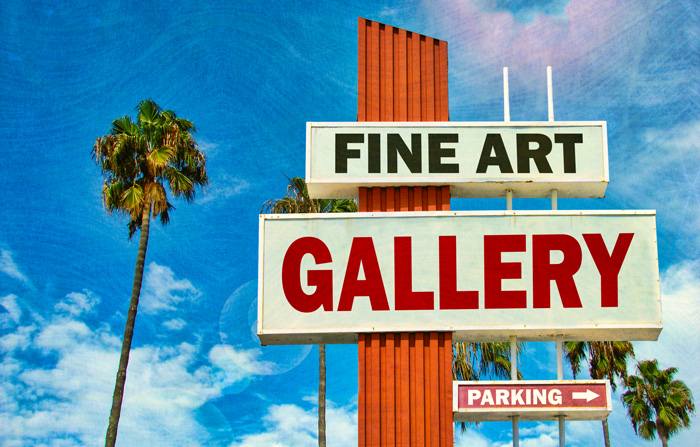All around the United States, you are hearing a common story right now. Museums and art galleries are struggling, many of them closing their doors. A tragedy because art is one of those things that I like to think of as an unessential essential. That is, you don’t need art in order to survive, not in the same way that you need food, water, and a place to live. But art is essential in that it enriches your life. Merely having art around helps people to be more creative, to think more deeply. But, because it is not absolutely necessary, it is often disregarded in tight times – tight times like now, for instance.
So what is causing all of these problems for art galleries and museums? There are numerous factors, some of them political – government funding cuts, for instance. And individuals, in this time of uncertainty, are tightening their belts and spending less of their disposable income on the unessential essentials like art. When that happens, museums and galleries everywhere suffer.
But there are solutions to this problem, I think. Solutions that can help preserve art everywhere in the United States, even when times are tight. Let’s take a look – and maybe, an enterprising gallery owner or the curator of a museum can put one or two of these thoughts to work. Perhaps we can do something about this slow drain of art from our daily lives.
Sell a Product
Now, for a gallery, this solution seems obvious. In fact, galleries are already doing this, selling art. That is how they stay open – or how they fail. For a gallery, the problem might just be that the store isn’t selling the right products. Many of the galleries that are surviving right now are the well-established institutions, those that have built a name for themselves, targeting high end markets where the pockets are seriously deep and people don’t blink at spending thousands of dollars on a single photograph the way you or I might not blink at spending five dollars at the nearby fast food joint for lunch.
For other galleries, the low and mid-range galleries, failure, closure, is a common thing and in many cases, the problem could very well be the products offered at these galleries. Gallery owners really need to take care to offer a rich diversity of artwork and more importantly, they need to study the local market and learn what that market will bear. If you can’t sell prints for $500 apiece, then you can’t. It might be time to consider lowering prices. Conversely, maybe those $500 prints are steering people away. In a wealthier area, a $500 price tag might just suggest that the prints are lower quality.
The market for art varies everywhere, which means that each gallery owner needs to study the market and learn what that market wants.
But what about museums? One solution to funding cuts, with donations that are slowly drying up, is to offer a product in the first place! Now, most museums do have gift shops but the offerings at gift shops are quite often curiosities and things that might interest people – just not enough to get them to buy. Offer art books, reproduction prints, cards with printed artwork. Not simply curiosities but things people want to take home and hang on their walls or place on their coffee tables. The revenue could just be enough to keep a struggling museum going.
The Displays Never Change
Museums obviously exist to preserve art and as such, these establishments will house permanent collections that simply won’t change much over the years. But museums also often host exhibitions, traveling collections, and such. The problem with this is that these exhibitions often focus on the biggest names in the art world and because of that, they become repetitive. I cannot tell you how many times I’ve had the opportunity to see Monet’s Waterlilies, for instance. After so many iterations, potential museum-goers begin to stay home in hopes that maybe on a different weekend, there will be an exhibition that they haven’t seen over and over before.
This is a problem that exists in galleries, too. Galleries may have the same pieces hanging on their walls for months at a stretch. For the customer, there is little temptation to return often if he or she is unlikely to see much that is new.
So where do you get that newness, that breath of fresh air that gets people coming to see the unexpected? How about from among the new artists, the artists that no one has ever looked at before? Both galleries and museums are capable of hosting annual events, calls for as yet undiscovered artists. Watch as applications pour in, new artists eager and excited for another opportunity coming their way. Choose from among the best submissions, promote artists that have never been represented before, and show museum-goers or gallery customers something they’ve never seen before. Most of all, such events build awareness about the establishment as the applicants circulate word about the museum or gallery among colleagues, friends, and family. As awareness builds, more patrons will come your way.
What About Online Presence?
One area where I see museums and galleries struggling, particularly the smaller establishments, is online. Museums and galleries both are being outcompeted by the internet. It’s too easy to hop on Instagram or Etsy, anywhere online really, to look at and buy art. Meanwhile, many smaller museums and galleries don’t even have websites. Houses of art need to work hard to promote themselves online – and do it so well that people have a reason to leave the house and see the real thing in person.
Don’t Forget About Marketing
I wish this weren’t true but I cannot even count how many times I never heard of a new gallery in the area until sometime after it shut down. So many times, galleries and smaller museums open up with little to no advertising, no social media presence, no website, not so much as an ad in the newspaper – only a storefront and a sign to mark their coming and going. And in six months, they’ve come and gone. No one knew these establishments existed, let alone went there to browse.
Marketing, no matter what your business, is essential. Get the word out and be loud – make as much noise as you can so that you aren’t drowned out in the noisy world that is the internet. Offer contests or other promotions to get people excited about winning a piece of art. Host a dinner or other special events so that people are coming to you to spend a night at your museum or gallery. Whatever you do, do something. Don’t simply set your sign on the sidewalk and leave it at that!
Many art establishments are already doing some of these things and these are the establishments that are surviving despite the difficulties of the current art climate. And, these aren’t the only solutions. When times are tight in the art world, we all need to do what artists do best – get creative!





